A challenge to time and geography/ The Thousand and One Nights || REVIEW
A big imaginative hug from this corner of the world. Raise your hand if you have never even heard that magical phrase wielded as a book's title: "One Thousand and One Nights". I know many fell asleep to one of its tales read by their parents or grandparents, or simply because they fell in love with it.
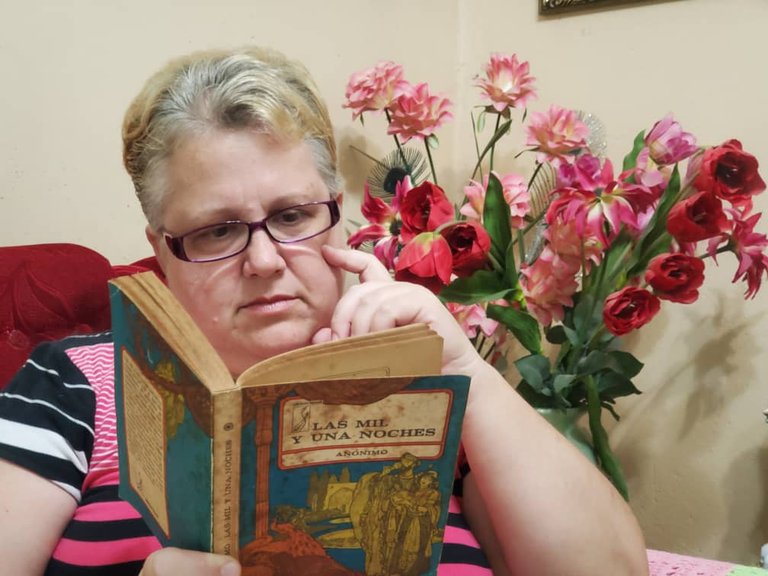
Today I am going to talk about a milestone in storytelling, something so majestic we sometimes struggle to describe it. And I'm doing it simply because I enjoy it, and I know I'm not the only one. I now have over half a century to my life and I still reread these pages.

One Thousand and One Nights is an encapsulated literary universe, a labyrinth of tales that has defied time and geographies. This monumental work, of collective and anonymous authorship, is a compendium of stories originating primarily from Persian, Indian, and Arabic sources, assembled over centuries, with its core consolidated around the 9th century. It is not a unitary creation but a cultural palimpsest that grew organically, reflecting the voices, values, and imagination of numerous generations and traditions.

The genius of the work lies in its narrative framework, one of the most ingenious structures in universal literature. The story of the intelligent Scheherazade, who to save her life and the lives of other women entertains King Shahryar each night with a tale left unfinished at dawn, is not just a clever device. It is a powerful metaphor for the power of the word as an instrument of survival, wisdom, and redemption. Through this device, the stories nest within one another, creating a narrative matryoshka where the boundaries between the main story and the secondary ones blur, immersing the reader in a lucid dream from which it is difficult to awaken.
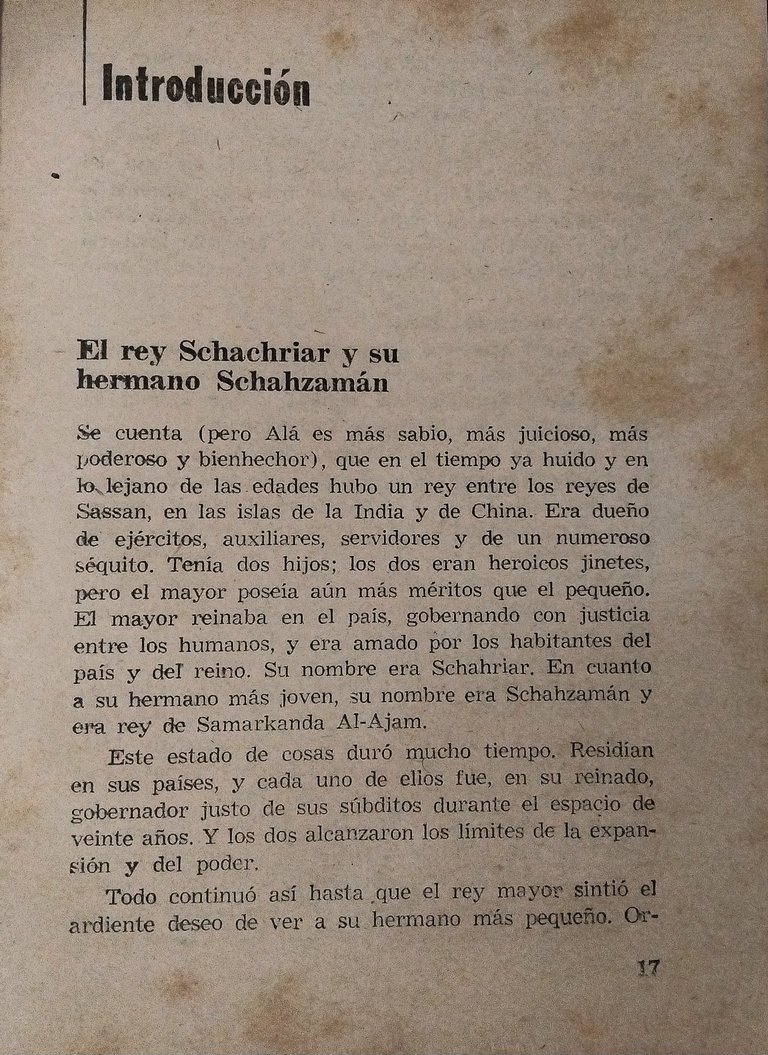
The content is a dazzling kaleidoscope of genres and themes. Within its pages, eroticism and morality, comedy and tragedy, the rawest realism and the most overflowing fantasy coexist. Genies in lamps, flying carpets, enchanted cities, and hidden treasures mix with sharp reflections on justice, loyalty, greed, and the human condition. Characters like Sinbad the Sailor, Aladdin, or Ali Baba (although the latter two were much later additions by Western translators) have achieved the status of universal archetypes. However, it is crucial to recognize that the version that popularized these stories in Europe was the translation – and adaptation – by the Frenchman Antoine Galland in the 18th century, who sweetened and modulated the text for European taste, sometimes softening its crudeness and its potent sensual charge.

Beyond its undeniable value as entertainment, One Thousand and One Nights is an invaluable historical testimony. The stories, even the most fantastical, offer a privileged window into medieval society of the Near East and the Islamic world: its customs, social structure, commerce, gastronomy, and worldview. The constant presence of chance and fate (fatum) reveals a cosmology where the divine and the earthly are inextricably linked.

The influence of this work on global literature and culture is incalculable. From writers like Marcel Proust, James Joyce, and Jorge Luis Borges – who considered it an infinite text – to countless adaptations in film, theater, and music, its echo is omnipresent. It demonstrated that narrative could be cyclical, embedded, and open, breaking with linear structures long before postmodernism called them into question.
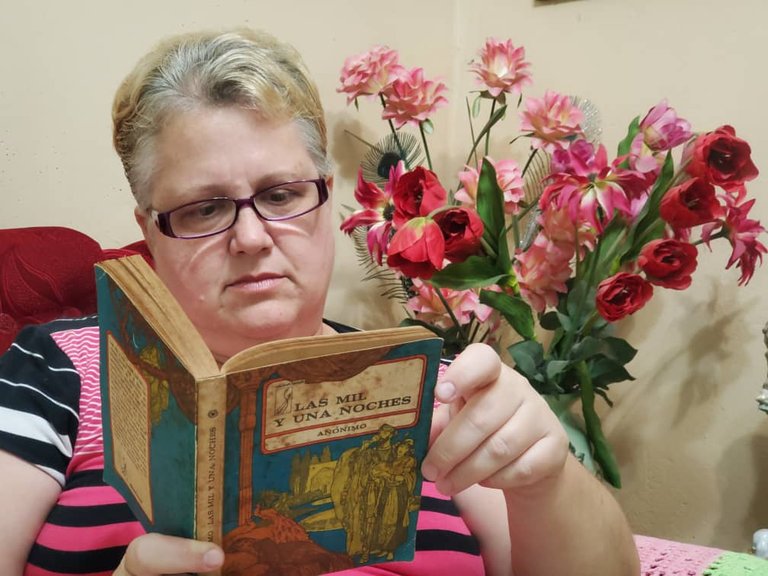
One Thousand and One Nights is a celebration of storytelling itself. It is a timeless reminder that stories define us, save us, and connect us to the deepest part of our shared humanity. It is not a book to be read in one sitting, but to be savored slowly, allowing its magic, its wisdom, and its mystery to unfold night after night, as it did for Shahryar himself. It is, in essence, an eternal feast for the imagination, a treasure that remains as alive and vibrant as the first time Scheherazade opened her mouth to begin her story.

I am a Doctor of Microbiology, a lover of nature, literature, music, cooking, and life itself. A staunch defender of family and children. The texts are written by me without the use of AI. Banners created on Adobe Fireworks courtesy of @azufrecs Thank you for visiting my blog.
The photos are my property

VERSIÓN EN ESPAÑOL
Un abrazo de imaginación desde este rincón del mundo. Que levante la mano aquel que no oyó siquiera esa oracion de magia que se esgrime como titulo de un libro "Las Mil y una Noches". Se que muchos se durmieron con alguno de sus cuentos leido por sus padres o abuelos o sencillamente porque los enamoró.
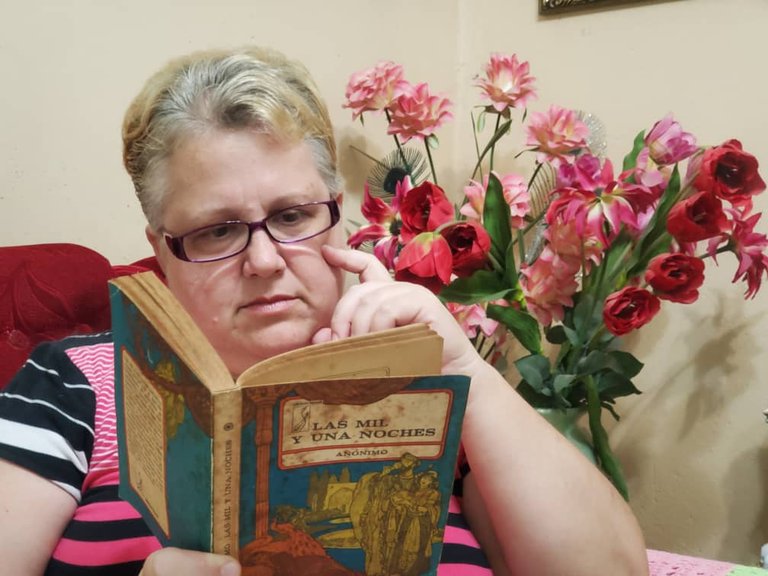
Hoy voy a hablar de un hito en la narración, algo que a veces no podemos describir por su majestuosidad. Y lo voy a hacer porque simplemente lo disfruto y se que no soy la única. Ya sumo mas de medio siglo a mi vida y aun continuo releyendo estas páginas.

Las mil y una noches es un universo literario encapsulado, un laberinto de relatos que ha desafiado al tiempo y a las geografías. Esta obra monumental, de autoría colectiva y anónima, es un compendio de cuentos de origen principalmente persa, indio y árabe, ensamblados a lo largo de siglos, cuyo núcleo central se consolidó hacia el siglo IX. No es una creación unitaria, sino un palimpsesto cultural que creció orgánicamente, reflejando las voces, los valores y el imaginario de numerosas generaciones y tradiciones.

La genialidad de la obra reside en su marco narrativo, una de las estructuras más ingeniosas de la literatura universal. La historia de la inteligente Scheherezade, quien para salvar su vida y la de otras mujeres entretiene cada noche al rey Shahriyar con un cuento que deja inconcluso al amanecer, no es solo un dispositivo ingenioso. Es una poderosa metáfora sobre el poder de la palabra como instrumento de supervivencia, sabiduría y redención. A través de este recurso, los relatos se encajan unos dentro de otros, creando una matrioska narrativa donde las fronteras entre la historia principal y las secundarias se difuminan, sumergiendo al lector en un sueño lúcido del que es difícil despertar.
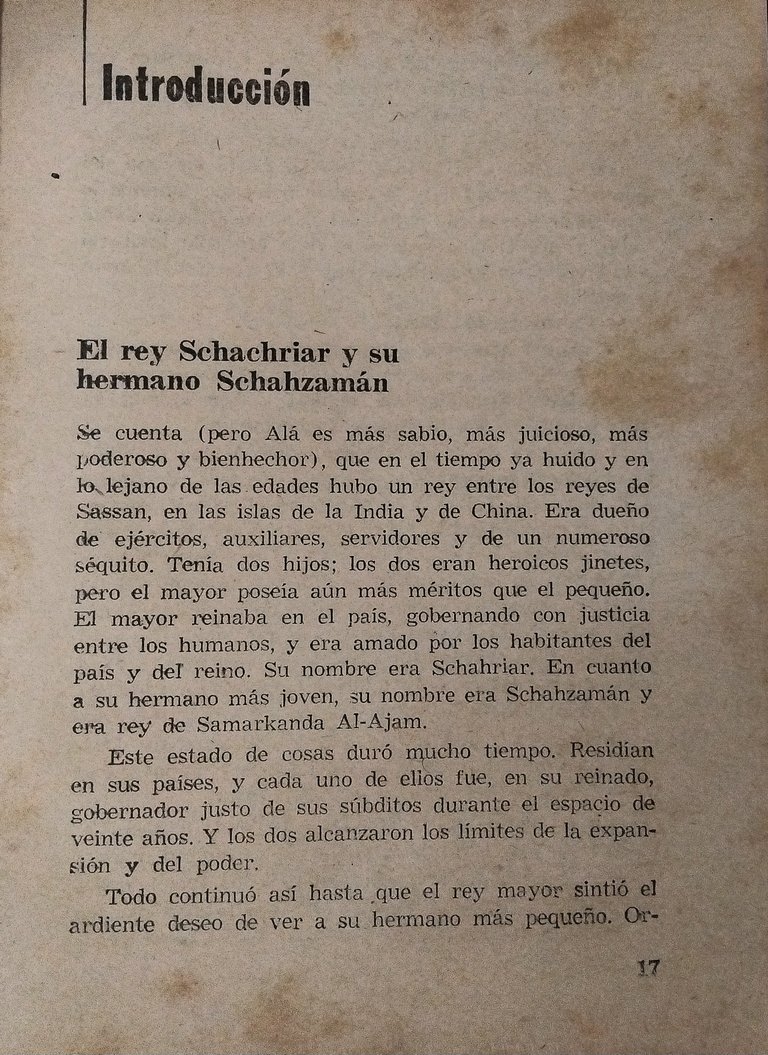
El contenido es un caleidoscopio deslumbrante de géneros y temas. En sus páginas conviven el erotismo y la moralidad, la comedia y la tragedia, el realismo más crudo y la fantasía más desbordante. Genios en lámparas, alfombras voladoras, ciudades encantadas, y tesoros escondidos se mezclan con agudas reflexiones sobre la justicia, la lealtad, la codicia y la condición humana. Personajes como Simbad el Marino, Aladino o Alí Babá (aunque estos dos últimos fueron incorporaciones muy posteriores de traductores occidentales) han alcanzado la categoría de arquetipos universales. Sin embargo, es crucial reconocer que la versión que popularizó estas historias en Europa fue la traducción –y adaptación– del francés Antoine Galland en el siglo XVIII, quien endulzó y moduló el texto para el gusto europeo, a veces suavizando su crudeza y su potente carga sensual.

Más allá de su innegable valor como entretenimiento, Las mil y una noches es un testimonio histórico invaluable. Los relatos, incluso los más fantásticos, ofrecen una ventana privilegiada a la sociedad medieval del Oriente Próximo y el mundo islámico: sus costumbres, su estructura social, su comercio, su gastronomía y su visión del mundo. La presencia constante del azar y del destino (fatum) revela una cosmovisión donde lo divino y lo terrenal están inextricablemente unidos.

La influencia de esta obra en la literatura y la cultura global es incalculable. Desde escritores como Marcel Proust, James Joyce y Jorge Luis Borges –quien la consideraba un texto infinito– hasta incontables adaptaciones en cine, teatro y música, su eco es omnipresente. Demostró que la narrativa podía ser cíclica, embebida y abierta, rompiendo con las estructuras lineales mucho antes de que la posmodernidad las pusiera en tela de juicio.
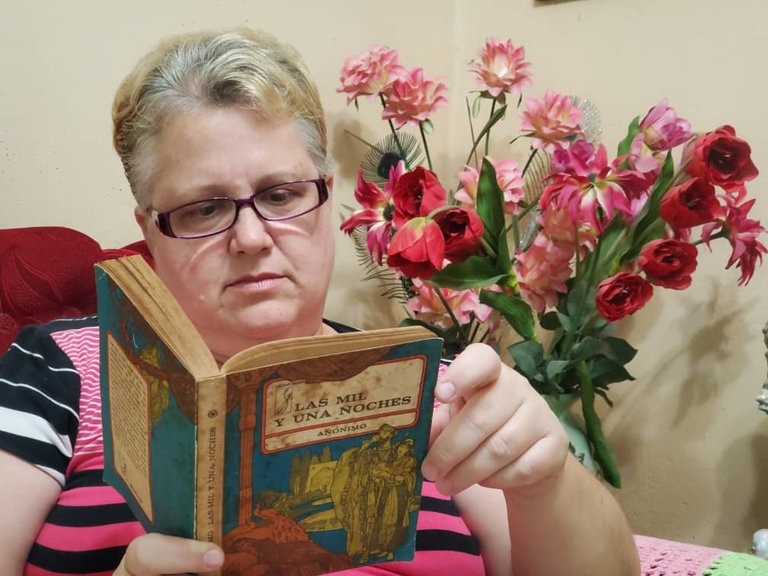
Las mil y una noches es una celebración de la narración misma. Es un recordatorio atemporal de que las historias nos definen, nos salvan y nos conectan con lo más profundo de nuestra humanidad compartida. No es un libro para leer de una sola vez, sino para saborear lentamente, permitiendo que su magia, su sabiduría y su misterio se desplieguen noche tras noche, como lo hizo con el propio Shahriyar. Es, en esencia, un festín eterno para el imaginario, un tesoro que sigue tan vivo y vibrante como la primera vez que Scheherezade abrió la boca para comenzar su historia.

#####Soy Médico Microbióloga, amante de la naturaleza, las letras, la música, la cocina y la vida en sí.Férrea defensora de la familia y los niños Los textos son creados por mi, sin uso de IA Banners creados en Adobe Fireworks por cortesía de @azufrecs Gracias por entrar a mi blog
Las imágenes son de mi propiedad

Muchísimas gracias por esta maravillosa reseña de una obra que como bien usted dice debemos revisitar una y otra vez, por su esencia atemporal. Usted ha descrito la obra de manera magistral y ha logrado motivarme de tal modo que mañana mismo, dado que no tengo un ejemplar en mi biblioteca personal, voy a la biblioteca de mi municipio a pedirlo prestado, si allí no estuviera voy a la biblioteca provincial pero ya me urge releerme "Las mil y una noches". Gracias Gracias Gracias.
Gracias por leerme. Y sí, es un deleite la lectura de esos libros. Esta edición es de varios tomos.
Ya estoy terminando de trabajar para en la tarde pasar por la biblioteca de mi municipio a indagar por el libro o mejor dicho, por los tomos de la obra. Tenga usted un bendecido día junto a sus seres queridos.
Congratulations @camelia28! You have completed the following achievement on the Hive blockchain And have been rewarded with New badge(s)
Your next target is to reach 6000 upvotes.
You can view your badges on your board and compare yourself to others in the Ranking
If you no longer want to receive notifications, reply to this comment with the word
STOP